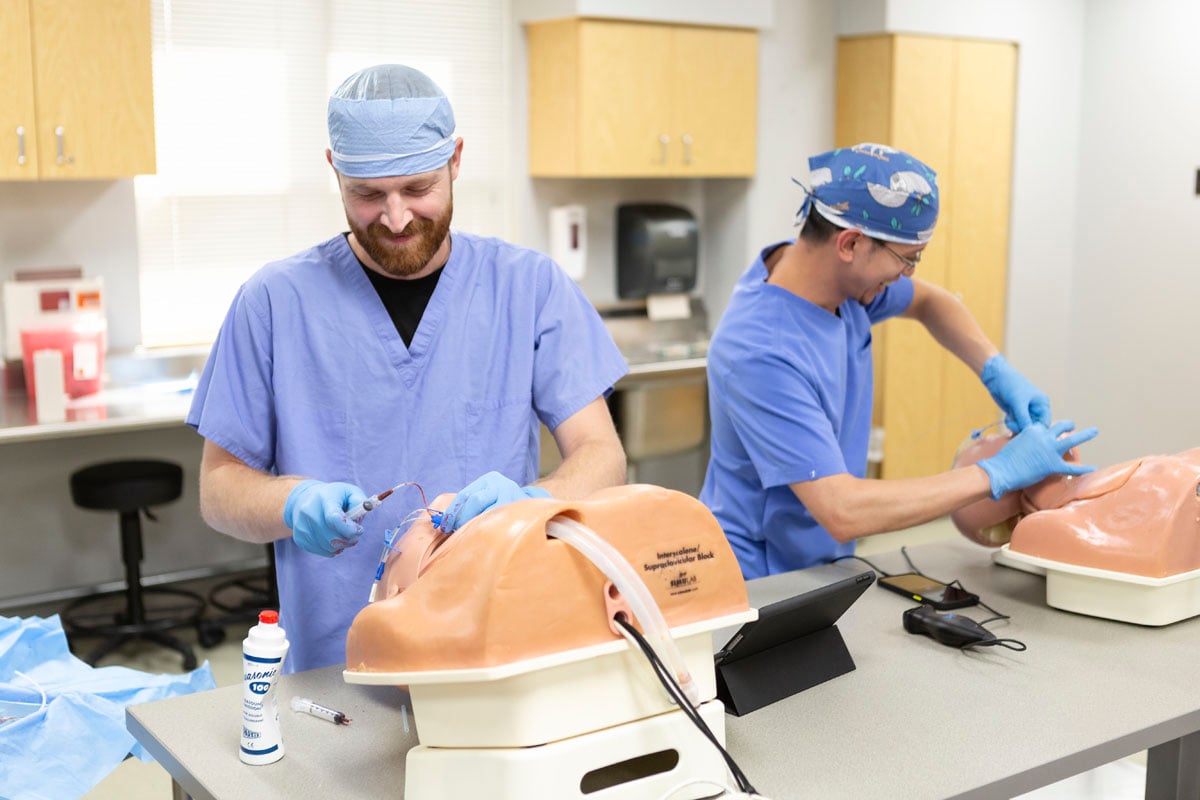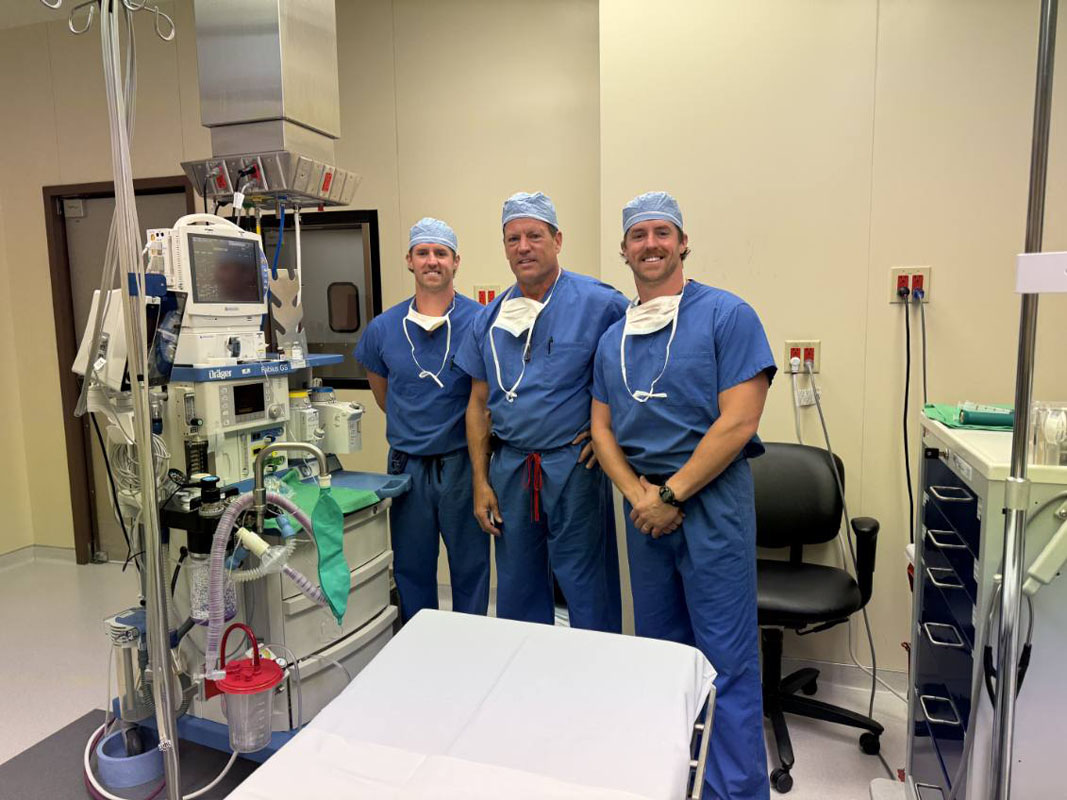
Newman meets growing demand for nurse anesthetists with doctoral program
Twin brothers Blake and Lucas Rawls began their careers as certified registered nurse anesthetists (CRNAs) in June 2025 — both as graduates of Newman University’s inaugural Doctor of Nurse Anesthesia Practice (DNAP) program and as colleagues of their father, Robert Rawls, at McBride Orthopedic Hospital in Oklahoma City.
“To have them join me as doctors was surreal,” said Robert, a veteran CRNA who helped establish McBride as a Newman clinical site nearly two decades ago.

Blake and Lucas earned degrees from Baylor University, completed a nursing program at Oklahoma City University and finished their DNAP at Newman — all without taking a semester off.
“Our father led us through this path into nurse anesthesia, and now we get to come out and all three of us work together every single day,” Blake said. “It’s a dream come true.”
Their decision to enroll at Newman was reinforced by personalized mentorship and strong clinical relationships.
“You get to know your teachers really well,” Lucas said. “They’re always willing to help you out and get to know you personally. That’s one of Newman’s greatest qualities.”
As the need for CRNAs continues to grow across the state of Kansas and beyond, Newman University is helping lead the response by preparing graduates for a rapidly evolving health care landscape.
Newman launched its Master of Nurse Anesthesia program in 1999, becoming one of just two educational institutions in the state offering this critical training. In 2021, the university built on that foundation by launching the DNAP program, which was only the second of its kind in Kansas.
Kimyatta Brent, director of Newman’s DNAP program, said the shift from master’s to doctoral-level education has elevated both the curriculum and student outcomes.
“Switching to the doctoral program added a year,” Brent said. “But it gave us time to focus on evidence-based practice, which is the foundation of how we structure our practice and our standards. Our students are truly at the forefront of medicine.”
The DNAP program prepares registered nurses to become CRNAs through a robust curriculum and clinical experiences. Brent said the inaugural cohort even helped shape its future.
“They have been extremely helpful and honest in what was working, what wasn’t working — down to the way our courses are aligned and scheduled,” she said. “Feedback from students was instrumental in how the program has been shaped and how we’re going to continue to forge forward.”

work together as doctors of nurse anesthesia.
CRNAs play a crucial role in health care. According to the American Association of Nurse Anesthesiology, CRNAs administer more than 80% of anesthetics annually in Kansas and are the sole anesthesia providers in many rural hospitals. The Kansas Association of Nurse Anesthetists reports that 74 of the state’s 105 counties rely entirely on CRNAs for anesthesia services.
With its rigorous preparation, Newman’s DNAP program is already producing highly sought-after professionals.
“They are getting some of the most excited, well-prepared clinicians that we’ve seen in a while,” Brent said. “I think they’re well-rounded practitioners — which is huge, especially for independent practice, should they choose to go into that. They’ll be able to rise to any occasion.”
Brent said she’s proud of the newest DNAP graduates and optimistic about the potential of the program.
“I think we’re on a great trajectory,” Brent said. “Our graduates are the future of health care, truly.”

